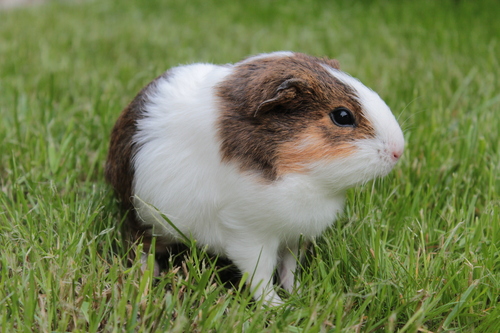
Guinea Pig
The guinea pig, Cavia porcellus, is a charming, social rodent known for its vibrant vocalizations and diverse coat colors. Originally from the Andes, these herbivores thrive in groups, playing a vital role in the ecosystem as grazers. Their endearing behaviors make them popular companions worldwide.
Brown, Black, White, Brindle
Color
3 months
Age of Sexual Maturity
21 days
Age of Weaning
4 mph
Top Speed
Characteristics
Cavia porcellus, commonly known as the guinea pig, is a small, tailless rodent native to the Andes Mountains. They have a robust body, short limbs, and a variety of coat colors and patterns. Guinea pigs are social, living in groups, and communicate with a repertoire of vocalizations. They primarily feed on hay and vegetables.
Distribution Range of the Guinea Pig
Cavia porcellus, commonly known as the domestic guinea pig, originated in the Andes mountains of South America. This region includes parts of modern-day countries such as Peru, Bolivia, Ecuador, and Colombia.
Guinea Pig's Habitat
Environmental Conditions
In their native region, guinea pigs inhabit regions of grasslands and rocky areas in the Andes where they are adapted to cooler climates. The high-altitude environment is characterized by temperate conditions with significant temperature fluctuations between day and night.
Ecological Niche
Guinea pigs are herbivorous mammals that feed on grasses, seeds, and other vegetation. They play a role in their ecosystem as prey for larger predators and contribute to seed dispersal through their foraging habits. Although domesticated guinea pigs have adapted to various human environments, their wild ancestors thrived in open grasslands and scrublands where they could easily graze and hide from predators.
Copyright @ Nature Style Limited. All Rights Reserved.
 English
English